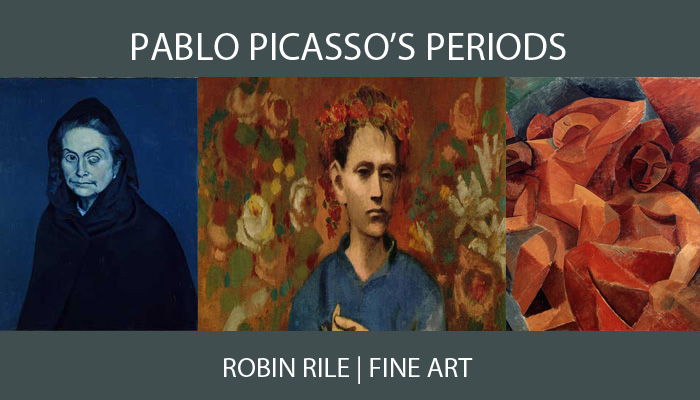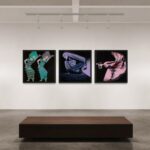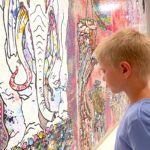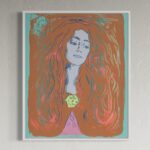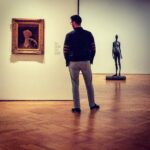
Producing over 20,000 paintings, prints, drawings, ceramics, sculptures, costumes, and theater sets during his lifetime, Pablo Picasso’s incredible output as an artist is mirrored by his ambitious flexibility that allowed him to develop distinctively different styles. His works continue to be as relevant and recognized today, as the artist remains the #1 Auction Artist of 2015.
Below is a brief description of Pablo Picasso’s Periods :
THE BLUE PERIOD
After his art education and development in Madrid and Barcelona, Picasso began to work in both Paris and Spain. After the suicide of his friend Carlos Casagemas, Picasso’s works began to reflect themes of loneliness, isolation, and despair seen in his use of a predominantly blue palette. Referred to as the “Blue Period”, the paintings between 1901 and 1904 depict fringe members of society to highlight struggles of poverty and alienation.
THE ROSE PERIOD
In 1905, Picasso’s art began to focus on more jovial topics in his “Rose Period” which portrayed harlequin figures, circus performers, and bohemian life. These works are painted in a variety of red hues, and explore the artistic possibilities inherent in the human form. He would later revisit this interest in realism and the body in his classical period.
THE PRIMITIVIST PERIOD
Inspired by the various cultural discussions and discoveries circulating around Paris in the early 20th century, Picasso made a foray into primitivist experimentation with works such as “Les Demoiselles d’Avingnon“. Inspired by African, Oceanic, and pre-Columbian art, Picasso appropriated various features in his own art, evident in his intuitive approach and mask-like faces.
ANALYTIC CUBISM
Around 1910, Picasso began to develop the style for which he is best known. Influenced by Cézanne’s abstract approach to flattening three-dimensional forms, Picasso began to completely fragment his subject to emphasize the flatness of the picture plane. Analytic cubism was a way for Picasso to reconcile multiple viewpoints in offering an abstracted view of common subjects.
SYNTHETIC CUBISM
Picasso completely abandoned tradition in his period of Synthetic Cubism, which combined multiple mediums in order to show a new artistic language of abstraction. In collage works, Picasso used newsprint, bottle labels, rope, chair caning, and other household supplies in order to recall the real object.
CLASSICAL PERIOD
After the First World War, Picasso delved back into the world of realism and began to produce unique works that reinterpreted classical and mythological themes. The birth of his first son inspired thematic interpretations of motherhood, love, and the human figure. His art from this period is figurative, calm, and lyrical—due in part to his involvement with Diaghilev’s Ballet Russes.
SURREALISM
Picasso’s experimentation with Surrealism grew out of his involvement with the Breton group and other surrealists, as well as his horror at the atrocities of the Spanish Civil War. The artist contributed “Guernica” to the World Exhibition where it saw acclaim and controversy with its emotive content and execution. Surrealism was a natural progression in the artist’s continued interest in abstraction and subjective experience.
And if you just haven’t had enough, here is a video we have compiled of Pablo Picasso’s Styles!
FOR WORKS AVAILABLE FOR PURCHASE BY PABLO PICASSO OR TO SELL WORKS BY PABLO PICASSO, CONTACT:
ROBIN RILE | FINE ART
info@robinrile.com or (813)340-9629
